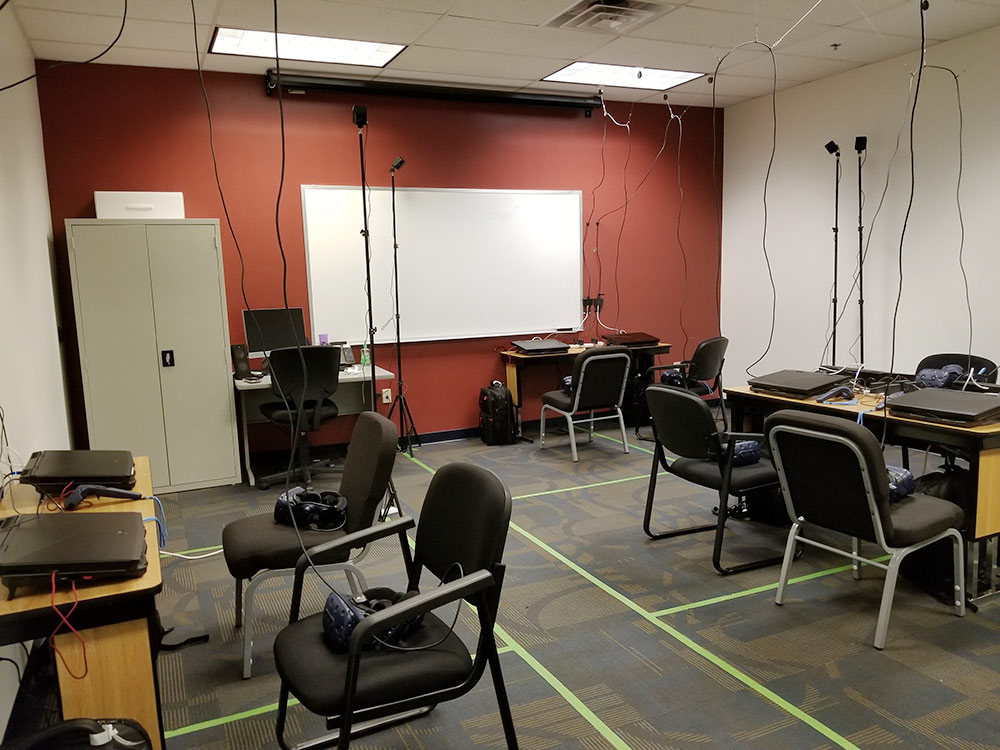by Tracy Chesney PhD(c), MSN-Ed, RN, CNE, CHSE, CHSOS
I remember the day when I felt I had just been transported to Oz. It was IMSH 2018 and I faced an all too familiar dilemma common with many Simulation Coordinators. The number of students I had to train far exceeded the tiny simulation space I was provided. My focus at this conference was learn whatever I needed in order to present a convincing proposal to Board members for a substantial sum of money. I was directed to a vendor booth, where I donned my first virtual reality headset and ventured on my 5-minute journey to Oz.
I put the VR headset over my head for the first time and was morphed to a virtual Emergency Room, where the avatar, my patient, was in serious trouble. Assessment of the data indicated immediate action needed to be taken. Only once in my professional career have I given adenosine to an actual patient. Those 8 seconds of asystole, hoping that the heart rate would return and the paroxysmal supraventricular tachycardia (PSVT) resolved, were just as accurate in the headset as it had been for me in clinical practice. Just my luck, this avatar needed a second dose before stabilizing. As I reached out to continue my assessment of the avatar, I heard, “the bed’s not there. Don’t tip over, or you’ll be on the floor.”
I emerged from my alternative reality in a stupor. “How was this possible?” I thought. I was fully immersed in the case with a physical response, body gestures, clinical decision-making, and my professional practice clinical judgment. I had only been in the headset for 5 minutes, but I was not aware of the actual time while in the moment. I was standing in a 6-foot circle, yet my mind and body were convinced it had just been in the ER. Welcome to Oz!
The size of a traditional simulation lab with a control room and debriefing area can be about 440 square feet of space. However, that experience in the headset inspired the vision of a different kind of simulation lab, one that maximized space limitations exponentially. My goal was to fit 10 virtual reality headsets stations into 440 square feet to create the first virtual immersive reality laboratory (VIRL) for nursing education in Arizona. I met many exciting experts along my journey to the executive board room, and now I get to share them with you!
- A gaming computer or laptop has its own language. It was a different tribe of laptops with unique programs and features and different manufacturing names. Learn the difference!
- Not all headsets are the same. It was a whole new language of pixels, degrees of freedom, and what the difference was between VR, AR, MR & XR.
- Immersive VR platforms can be grossly different from one another. No two were alike. Choose the one that is best for you BEFORE you choose your headset so you can guarantee compatibility.
- The gamers told me that two headsets could not be in the same room simultaneously without a wall between the headsets. How to overcome this when I was planning for 10 VR stations in the same room was going to be a challenge.
So with the heart of the tin man, the scarecrow’s brains, and the lion’s courage, I presented a proposal to the executive board for a 10-station open space VIRL for the sum total equivalent to only one high-fidelity mannikin used in a traditional simulation lab. They bought my plan. In October 2018, the first 10-station VIRL in Arizona’s nursing education history welcomed its first class of students.
The VRpatients platform offered users both a computer-based or headset-based virtual experience. This meant students could log in from any computer to get some clinical practice in – no headset required. In addition, the “build it how you want it, no coding required” authoring tool and case development technology provided healthcare simulation facilitators a user-focused experience in case development. The integration into the simulation curriculum accelerated clinical-decision making and clinical judgment experience in new and exciting ways.
So, if you are on that yellow-brick road into immersive virtual reality yet still have more questions than answers, I’d love to talk to you. Reach out and let’s collaborate. The future of nursing and EMS education is here.

